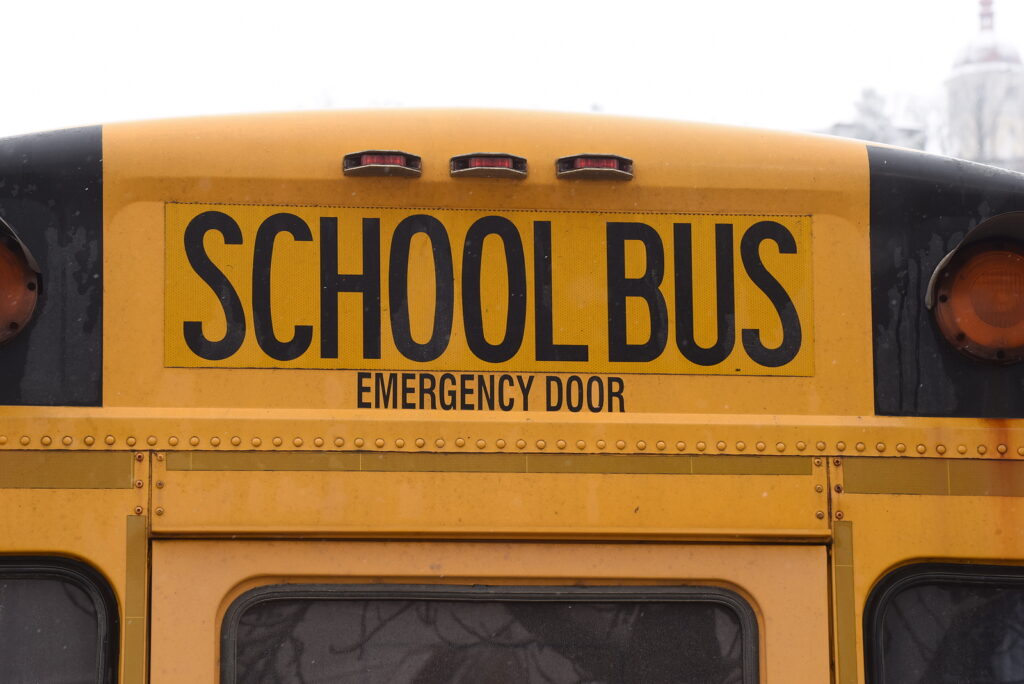It’s back-to-school season around the country, and for injury lawyers, this time of year could mean a greater call volume for school bus-related injury cases. Injury claims involving school buses have nuances that set them apart from a typical car accident case. When discussing school bus crashes and injuries, it’s important to note the potential for many witnesses or victims, which is why gathering as much information as possible in the early stages is critical.
School bus cases are unique due to the sheer number of parties that can be involved. Nationwide, roughly 25 million students begin and end their day with a trip on a school bus. But according to data from the National Association of State Directors of Pupil Transportation Services (NASDPTS), there are more than 17 million school bus stop-arm traffic violations each year. That means 17 million times each year, a child’s life is endangered simply by getting on or off their bus.
The National Safety Council reports that many children who lose their lives in bus-related incidents are between the ages of four and seven. Children, especially those who are younger, may step into traffic assuming a stop-arm will keep them safe, when injury attorneys know all too well the damage a negligent driver can cause. But school bus injuries involving pedestrians aren’t always caused by a passenger vehicle; other times, an inattentive bus driver may be the culprit, striking a child they may not see in their line of vision.
Sometimes, a school bus injury may not involve pedestrians at all. Collisions between motorists and school buses can cause serious injuries to both bus and motor vehicle passengers alike. Regardless of the scenario, most school bus injuries have one thing in common – a large number of witnesses, victims or both.
School buses can carry dozens of passengers at a time, meaning many people could be impacted by a single collision. Similarly, a pedestrian case involving a vehicle violating a school bus stop-arm could have upwards of 70 witnesses on a single bus. Injury attorneys who are hired for a bus accident case need to quickly gather as much information as they can upfront. Start with any parties who might have details about what happened, and secure that documentation early. With potentially dozens of witnesses to an accident, each witness’s recollection or version of events can quickly change, especially as time progresses and memories fade.
Some witnesses will likely be minors, which will be important when considering credibility and obtaining permission from guardians to speak with them. This will likely be a lengthy process for you and your team, so starting as soon as possible to obtain information from all parties will be critical for the outcome of your client’s case.
When handling a case involving a school bus and children, determining fault may be a two-sided coin. Was there any fault on the part of the bus driver? And what fault was on the other vehicles involved? Attorneys should also consider if criminal charges will be filed. Passing a school bus with a stop-arm out is against the law, and the perpetrator is likely to be charged with a serious crime if someone is harmed – potentially even felony murder if a child is killed and the negligent driver ignored the stop-arm. In those types of cases, attorneys can look at victims’ rights through the criminal court system to help the families.
School bus injuries are fortunately rare, and nationwide they represent a low percentage of injury cases. In fact, while dangers do exist for students, the buses they ride are designed with safety in mind. According to the National Highway Traffic Safety Administration, less than 1% of all traffic fatalities involve children on school transportation vehicles.
However, while infrequent, these cases are deadly, and they often involve catastrophic injuries. Any pedestrian will likely be seriously injured if they’re hit by a vehicle. This is especially true for a child who is hit getting off a bus or is struck in a crosswalk.
Here are several for parents and guardians from the National Safety Council regarding school bus safety. The following tips are universal and can be used in your own community:
- Stand 10-12 feet from the street and avoid roughhousing or playing at the bus stop.
- Keep electronic equipment packed away as you prepare to board. Never use an electronic device or wear earbuds when walking to the bus stop or when getting on or off the bus.
- Once on the bus, be sure to keep the aisle clear of books, bags, etc.
- Do not distract the bus driver.
- Use the handrail when getting on or off the bus.
- Do not cross in front of the bus until the driver tells you it’s safe.
When offering advice to your community, remember to address drivers as well, as they are just as responsible for keeping kids safe. It’s critical to slow down and pay close attention to the roads when kids are present, especially before and after school hours. When driving behind a bus, drivers should allow a greater following distance than when traveling behind a car. Additionally, it is illegal in all 50 states to pass a school bus that is stopped to load or unload children. Drivers are encouraged to follow these tips from the National Safety Council:
- Never pass a bus from behind or from either direction if you’re on an undivided road and if a bus is stopped to load or unload children.
- If the yellow or red lights are flashing and the bus stop arm is extended, traffic must stop.
- The area 10 feet around a school bus is the most dangerous for children. Stop far enough back to allow them space to enter and exit the bus safely.
- Be alert, as children are often unpredictable and may ignore hazards and take risks.
- Refrain from blocking the crosswalk when stopped at a red light or waiting to make a turn. This forces pedestrians to go around you, which could put them in the path of moving traffic.
- In a school zone, when flashers are blinking, stop and yield to pedestrians crossing in the crosswalk or intersection.
- Always stop for a school patrol officer or crossing guard holding up a stop sign.
- Take extra care to look out for children in school zones, near playgrounds and parks, and in all residential areas.
- Don’t honk or rev your engine to scare a pedestrian, even if you have the right of way.
- Never pass a vehicle that has stopped for pedestrians.
- Always use extreme caution to avoid hitting pedestrians wherever they may be, no matter who has the right of way.
A leading cause of injury accidents in crosswalks or related to school buses is drivers not paying attention. The number of people glancing at their cell phones while driving is out of control. My number one recommendation for attorneys is to spread the message of the dangers of distracted driving. Encourage your community to put their phones down, pay attention, and take care of the kids. For those who don’t and break the law, we’ll be there to fight for our clients.








